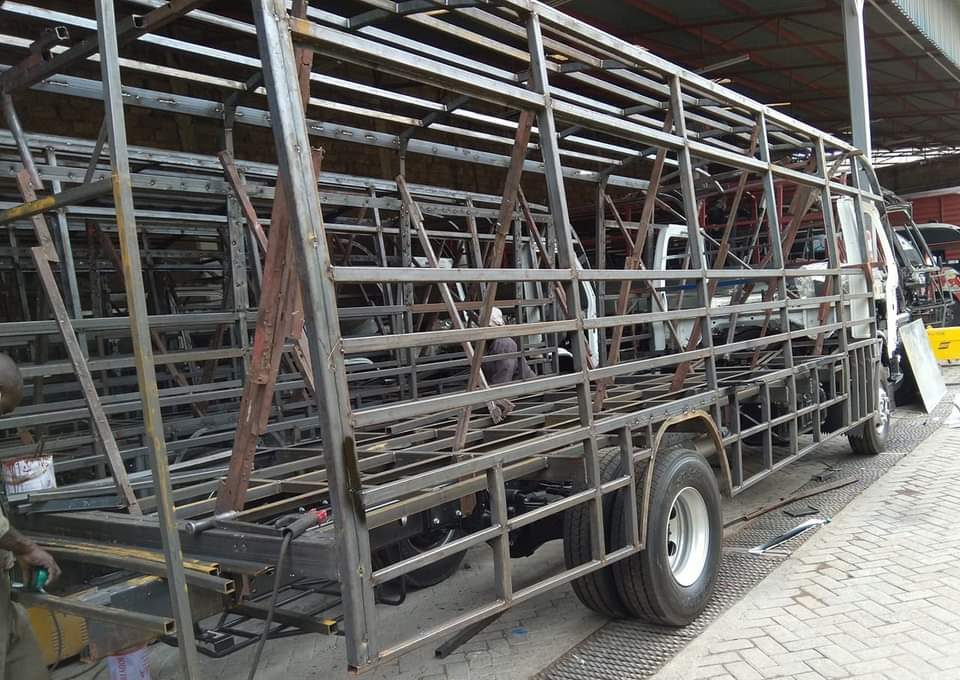By Paul Karuga Njuguna– Executive Director, Road Safety Awareness Initiative
@RSAIKenya
Kenya’s public transportation system plays a pivotal role in connecting urban and rural communities, facilitating the movement of millions daily. However, the buses that form the backbone of this essential service are often fabricated without adhering to critical safety standards, posing significant risks to passengers and other road users.
While the Kenya Bureau of Standards (KEBS) introduced KS372, a regulation specifically for bus fabrication, weak enforcement has hindered the realization of safer and more reliable public transport.
KS372 establishes key guidelines for bus construction, emphasizing structural integrity and passenger safety. It mandates robust structures designed to withstand rollovers, ensuring the vehicle’s structure does not collapse and protecting passengers from crushing injuries.
Additional features, such as front and side impact protection, are critical for improving crash survival rates. A gangway width of 450 mm for buses carrying over 40 passengers (Class IV) and 350 mm for those carrying 26–40 passengers (Class III).
A 3×2 seat arrangement with a track width of 2250 mm and properly curved side pillars to optimize space and comfort ,Rear Overhang which should be limited to 60% of the wheelbase to enhance vehicle handling and stability.
Emergency Safety Features should include Emergency escape hatches on the roof and small sledge hammers for breaking glass from the inside, as seen in European models.Fire-retardant materials to mitigate fire-related risks and enhance passenger safety.
Neglecting these standards compromises not only the safety of passengers but also that of other road users. Poor structural integrity increases the risk of severe injury during crashes, and inadequate roof support with heavily loaded top carriers heightens the danger of rollovers due to swinging and affecting center of gravity, a frequent occurrence given the challenging conditions of Kenya’s highways and rural roads.
A pressing concern in Kenya’s bus fabrication industry is the prevalent use of truck chassis instead of purpose-built bus chassis. This practice, motivated by cost considerations and the availability of truck parts of popular models, undermines safety and passenger comfort.
Truck chassis are designed for transporting goods, not people. They lack features such as appropriate suspension systems and weight distribution mechanisms, compromising the stability and comfort required for passenger transport. In contrast, dedicated bus chassis offer numerous safety advantages as follows;
- Active Safety Features:
- Electronic Braking Systems (EBS) for enhanced braking precision.
- Anti-Lock Braking Systems (ABS) and Automatic Stability Regulation (ASR) to prevent skidding and wheel spin.
- Emergency Brake Assist (EBA), which detects imminent collisions and applies brakes automatically.
- Lane Guard Systems (LGS) to alert drivers when a bus deviates from its lane.
- Adaptive Cruise Control (ACC), maintaining safe distances and controlling speed on gradients.
- Structural Benefits:
- Precision steering and optimized suspension systems ensure superior road handling.
- Robust designs protect passengers in the event of a crash, reducing fatalities and injuries.
By mandating the use of bus-specific chassis, Kenya can align its public transport system with global safety standards, enhancing both passenger safety and ride quality.
The Call for Policy Reforms and Enforcement
To address these challenges, Kenya must strengthen the enforcement of KS372 and implement additional policies to improve bus fabrication standards. Suggested reforms include:
- KEBS, in collaboration with traffic police and vehicle inspection authorities, should ensure compliance during fabrication and throughout a bus’s operational life
- Legislation should prohibit the use of truck chassis in bus construction, prioritizing passenger safety and comfort.
- Buses should undergo periodic crash testing and inspections to evaluate structural integrity, focusing on features like roll-over cages and emergency exits.The cost should be covered by the bus chassis seller as a safety and marketing strategy
- KEBS should spearhead training programs for authorized fabricators who should be vetted on safety,quality and raise awareness among bus operators about the importance of adhering to safety standards.
- Encourage the adoption of advanced safety systems, such as rollover prevention mechanisms, automatic fire suppression systems, and passenger monitoring systems for real-time safety assessments.
Implementing robust safety standards for bus fabrication will have far-reaching benefits, including,Enhanced Passenger Safety: Stronger structures and advanced safety features significantly reduce the risk of fatalities and injuries in accidents.Improved Public Confidence: A safe, comfortable public transport system attracts more users, easing congestion and lowering emissions.Global Alignment: Adopting international best practices positions Kenya as a leader in road safety initiatives, in line with the UN Decade of Action for Road Safety and The National Road Safety Action Plan 2024~2028
Kenya’s public transport sector holds immense potential to provide safe, efficient, and affordable mobility. However, this can only be realized if vehicles are constructed to high safety standards.
The enforcement of KS372, coupled with policies mandating the use of bus-specific chassis and integrating advanced safety measures, is critical for reducing road fatalities and enhancing the overall travel experience.
For passengers, drivers, and all road users, the time to prioritize bus safety is now. By investing in stronger fabrication standards, Kenya can create a public transport system that not only saves lives but also inspires confidence and pride in the nation’s infrastructure.

